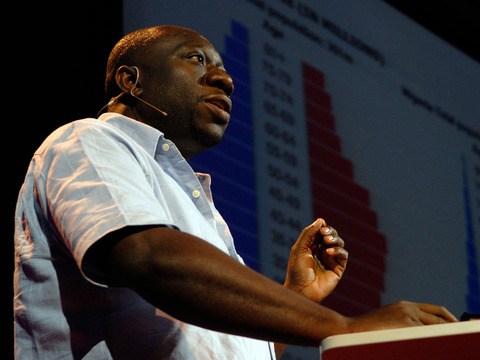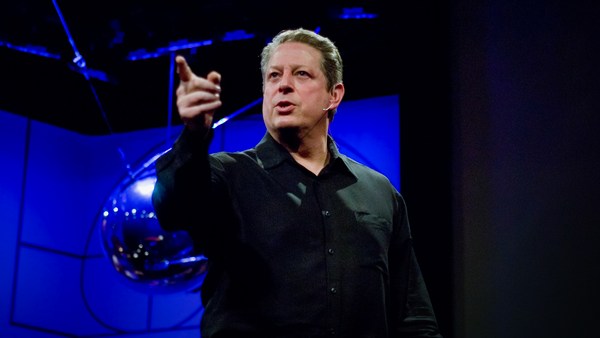A warming planet, greater temperature variability, new pathogens like COVID 19 - what does this mean for us as humans? Why is it absolutely essential that we slow down climate change? Friends, we live in an ocean of bacteria, viruses and fungal pathogens; in fact, like fish living in water, we live in a sea of microbes. They make life possible for us on the planet, they produce half the oxygen that we breathe, they take care of breaking down our waste, and they enable the very life that makes us possible. However, some of them also cause disease, as we have seen most recently with COVID. A virus that normally lives in bats has managed to find its way into humans, where it is able to survive and thrive. And when this happens - and it’s a process we call zoonosis - then we face diseases we’ve never faced before. Climate change makes this possible in at least three ways that we know of. First, our very environment is changing and putting us in close contact with hidden pathogens that we have never encountered before. A few years ago, anthrax killed a 12-year-old boy in the Yamal Peninsula in a remote part of Siberia. Another 20 people in this area were infected with anthrax, and another hundred suspected cases were hospitalized. But very importantly, more than 2,300 reindeers in the area died from the infection. Why did this happen? Thawing permafrost, which is permanently frozen layers of soil, released previously immobile spores of anthrax into the nearby water and soil, and then into the food supply. There had been no anthrax outbreak in this region in the previous 75 years. The Siberian permafrost, which is about a million years old, is home to billions of funguses, bacteria and viruses that are slowly emerging with the melting of the permafrost. When these pathogens eventually jump to animals and then to us humans, we are at great risk. Second, the increase in temperature is selecting for pathogens that are able to adapt to our temperatures. Many funguses would not normally survive in the human body, because our bodies are just too warm for them. But some of them are now adapting to the warmer ambient temperature due to climate change. And as you can see in this graphic, these newly adapted fungi move to birds and finally to humans, where they cause terrible diseases. A recent example is a fungus called Candida auris. This fungus was first described in 2009 after it was isolated from the ear canal of a 70-year-old Japanese woman in Tokyo. Thirty to sixty percent of people with Candida auris infections have died. I repeat: 30 to 60 percent of people with Candida auris infections have died. To date, there have been fewer than 10,000 thousand cases globally. But as we saw with cases of black fungus in the aftermath of COVID, fungal pathogens are always waiting to attack patients with weakened immune systems. Third is the combination of climate change and drug resistance. As we use more antibiotics in humans, and animals to help them grow fatter, faster, and even on fruit trees, we are helping to make pathogens more resistant to the drugs that we typically use to treat these bacterial infections with. Now, take the example of the fungus Candida auris which I just spoke about. Candida happens to be resistant to the most common category of antifungals called “azoles.” And that’s probably because we have extensively used azoles as fungicides in agriculture. Research by my team at Princeton University shows that gram-negative bacteria are particularly lethal category of bacteria, and those that are drug resistant are more likely to thrive in warmer temperatures. Specifically, every one percent increase in temperature results in a two percent increase in the frequency of resistant bacteria. So as the climate changes, we face even more lethal pathogens that we can no longer treat. Even today, 700,000 deaths are caused each year, mostly in developing countries, because of these drug resistant bacterias. And nearly all of the disease-causing bacteria that we encounter have become drug resistant. And as this graphic shows, the number of enzymes that bacteria are now able to produce to disable antibiotics that we know of was just one or two about 50 years ago. Today, there are over a thousand of these enzymes that we know of. So where does this leave us? Climate change is already causing rising oceans, hurricanes, droughts, floods and heat waves at a scale we have not seen before. Climate variability is a challenge, but at dimensions we don’t even understand yet. And undoubtedly, as with COVID, we will discover more. But the sad truth is that the people who are most affected are the poor, who also happen to be the most vulnerable to infections. The very people who did not contribute to climate change to begin with are the most affected. We’re simply not ready for climate change. if we want to avoid a repeat of the past two years of COVID, we simply have to understand that we humans are vulnerable to pathogens. We need more research. We need to be proactive with surveillance to find pathogens before they find us. But we also need to slow down climate change. My friends, we have no choice. And you hold the key.





